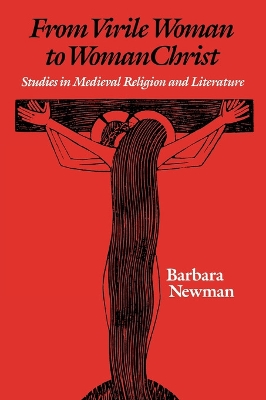Why did hagiographers of the late Middle Ages praise mothers for abandoning small children? How did a group of female mystics come to define themselves as "apostles to the dead" and end by challenging God's right to damn? Why did certain heretics around 1300 venerate a woman as the Holy Spirit incarnate and another as the Angelic Pope?
In From Virile Woman to WomanChrist, Barbara Newman asks these and other questions to trace a gradual and ambiguous transition in the gender strategies of medieval religious women. An egalitarian strain in early Christianity affirmed that once she asserted her commitment to Christ through a vow of chastity, monastic profession, or renunciation of family ties, a woman could become "virile," or equal to a man. While the ideal of the "virile woman" never disappeared, another ideal slowly evolved in medieval Christianity. By virtue of some gender-related trait—spotless virginity, erotic passion, the capacity for intense suffering, the ability to imagine a feminine aspect of the Godhead—a devout woman could be not only equal, but superior to men; without becoming male, she could become a "womanChrist," imitating and representing Christ in uniquely feminine ways.
Rooted in women's concrete aspirations and sufferings, Newman's "womanChrist" model straddles the bounds of orthodoxy and heresy to illuminate the farther reaches of female religious behavior in the Middle Ages. From Virile Woman to WomanChrist will generate compelling discussion in the fields of medieval literature and history, history of religion, theology, and women's studies.
- ISBN10 0812200268
- ISBN13 9780812200263
- Publish Date 16 December 2011 (first published 1 January 1995)
- Publish Status Active
- Publish Country US
- Imprint University of Pennsylvania Press
- Format eBook
- Pages 424
- Language English
